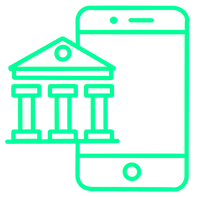The Power of Self-Directed Learning
As our world evolves and the demands of the labor market shift, high school students need to adapt and acquire new skills to succeed in today's highly competitive economy. Traditional teaching methods may not suffice in developing well-rounded, innovative thinkers. Our youth need to be more skilled and adaptable than ever before in order to succeed in the ever-changing landscape of the 21st century.
One of the most empowering lessons a high school student can learn is how to direct their own learning and become financially literate. It's not just about making money, but also ensuring a stable and sustainable future for oneself and one's family.
This is where self-directed learning comes into play.
What Is Self-Directed Learning?
Self-directed learning (SDL) involves individuals taking control and managing their learning experience, finding resources, setting goals, and evaluating progress. By cultivating a sense of autonomy and responsibility in teenagers, self-directed learning can prepare them to be independent, life-long learners who thrive in various environments.
SDL is a form of education that involves students taking the initiative to decide what they want to learn, how they want to learn it, and when they want to learn. When it comes to high school education, this concept may seem abstract or unconventional. However, it is a vital skill that can greatly benefit one's mental, emotional, and financial growth.
Research has shown that when students engage in self-directed learning, they are more likely to develop critical thinking skills, problem-solving abilities, and better communication skills. These essential skills are foundational to overall educational success and future career growth.
According to the American Psychological Association (APA), self-directed learning helps students develop a sense of responsibility for their own education, which can lead to more motivation and engagement in their studies, leading to improved academic performance and personal satisfaction.
The Power of Financial Literacy
One crucial area in which high school students can optimize their self-directed learning is financial literacy. A solid foundation in managing money is crucial in navigating adulthood. The importance of financial literacy cannot be overstated; it helps young adults make informed decisions and avoid financial pitfalls as they navigate through life.
A study by the National Endowment for Financial Education (NEFE) found that only 24% of millennials demonstrate basic financial literacy. This lack of understanding can lead to uncontrolled debts, limited savings, and an inability to invest in long-term goals like retirement, education, and homeownership.
This needs to change and we intend to fix it.
Educators can play a significant role in setting early-stage money management habits by fostering an environment conducive to learning financial literacy. The benefits of learning financial literacy in high school are numerous:
Embracing Investing Simulators
Incorporating technology into the learning process can greatly enhance self-directed learning. Investing simulators are educational tools designed to replicate real-world investing experiences.
They allow users to practice trading stocks, bonds, and other securities with virtual money, providing a risk-free environment to learn investment strategies.
Free investing simulators such as Rapunzl mimic stock market conditions and provide access to real-time market data from Nasdaq and Coinbase, allowing students to analyze financial performance and make better investment decisions.
Benefits of Using Investing Simulators In Personal Finance
Financial literacy is an essential life skill, and one way to teach high school students the basics of investing and personal finance is through a free investing simulator. These are the benefits students can gain through hands-on experience with various investment strategies as they learn about the risk-vs-reward aspects of investing without the worry of losing actual money:
Engaging Learning Experience
Investing simulators offer an interactive and dynamic learning environment that engages students and holds their attention.
Real-World Application
Rapunzl provides students with the opportunity to apply the concepts they learn in their economics classes to real-world situations. This practical experience can help them understand the value of budgeting, investing, and saving at an early age.
Builds Confidence
Learning the ropes of investing can be intimidating for many high school students. By using a free investing simulator, students can build their confidence in making financial decisions and develop their investment strategies before they venture into the real world.
Encourages Responsibility
Rapunzl teaches students the value of responsible investing, saving for the future, and ultimately supporting their financial goals. When students see the impacts of their simulated investments, they'll be more likely to continue developing their financial knowledge and making informed decisions.
Enhances Decision-Making Skills
Self-directed learning can improve critical thinking and decision-making abilities. In the context of the free Rapunzl simulator, students will have to continually analyze, evaluate, and adjust their strategies, which can help them hone these essential skills.
Prepares For Future Success
By leveraging Rapunzl, students will be more equipped to manage and grow their money once they enter the world of work, become entrepreneurs, or pursue further education. It's a vital step in securing a successful and stable financial future.
Competitive Drive
Many investing simulators such as Rapunzl allow students to compete with friends or peers in virtual trading competitions, promoting healthy competition and fueling motivation.
Self-directed learning has the potential to transform the way high school students approach their education and personal development. By leveraging free investing simulators, teenagers can harness the power of self-directed learning to improve their financial literacy and gain crucial money management skills.
As responsible educators and parents, we have the opportunity to instill a financially savvy mindset in the next generation. Providing high school students with the appropriate resources and guidance can help them prosper in a world filled with financial challenges and uncertainties.










